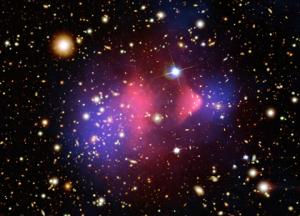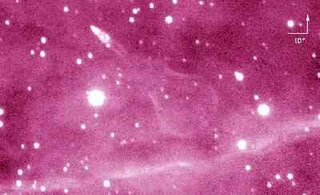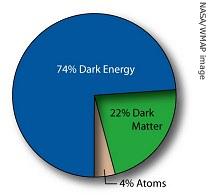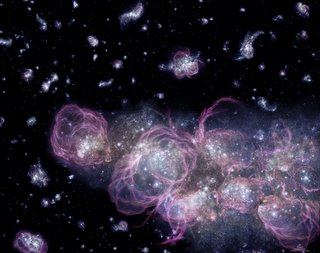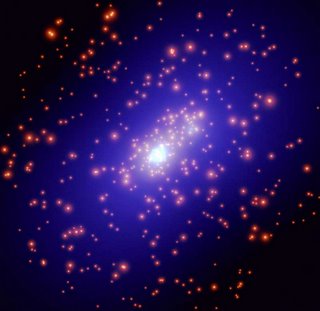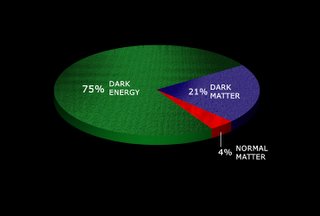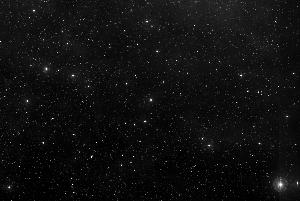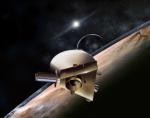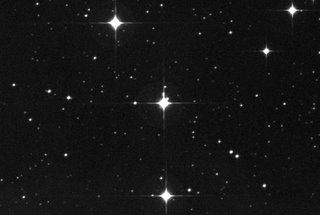
At 03:34:30 UT, the Swift Burst Alert Telescope (BAT) triggered and located GRB 060218A(trigger=191157). Swift slewed immediately to the burst. The BAT on-board calculated location is RA,Dec 50.404, +16.866 deg {RA 03h 21m 37s, DEC +16d 51' 58"} (J2000) with an uncertainty of 3 arcmin (radius, 90% containment, including systematic uncertainty). The TDRSS lightcurve shows nothing, which is consistent and common for an image trigger.
The XRT began taking data at 03:37:04 UT, 153 seconds after the BAT trigger. The XRT on-board centroid algorithm did not find a source in the image and no prompt position is available. We are waiting for down-linked data to detect and determine a position for the source.
The UVOT began taking data 152 seconds after the BAT trigger. There is an indication of an afterglow candidate at RA,Dec RA 03h 21m 39.8s,DEC +16d 52' 06" +/- 1 arcsec with an estimated B magnitude of 19.4.
 The orbiting NASA telescope Swift picked up the gamma-ray burst (GRB) in a star-forming galaxy about 440 million light years away, towards the constellation of Aries. As it swivelled in the direction of the blast, Swift also relayed its discovery to major ground-based and space-based observatories. The combined data from their sensors has been pieced together to give a picture about what happened over the next 17 days.
The orbiting NASA telescope Swift picked up the gamma-ray burst (GRB) in a star-forming galaxy about 440 million light years away, towards the constellation of Aries. As it swivelled in the direction of the blast, Swift also relayed its discovery to major ground-based and space-based observatories. The combined data from their sensors has been pieced together to give a picture about what happened over the next 17 days.GRBs have long been associated with the aftermath of supernovae. They are typically huge releases of energy. In a few seconds, they can spew out more energy than the sun will do in its entire expected lifetime of 10 billion years. This GRB was highly unusual. It lasted almost 40 minutes, whereas a typical GRB only lasts a few milliseconds or tens of seconds at the most, and it was remarkably weak, too - a mild type of GRB known as an X-ray flash.
 The astronomers believe that this burst was a high-energy jet that pierced through the doomed star from its collapsing core. In essence, it was sending out a warning that a supernova was imminent. Suddenly, as the GRB faded away, the massive star blew itself into smithereens, sending out a "slightly aspherical" shock wave that rocketed across the galaxy. The star's glowing remains were confirmed optically two days later and classified as supernova SN 2006aj. Britain's Particle Physics and Astronomy Research Council (PPARC) operates an ultra-violet/optical telescope aboard Swift.
The astronomers believe that this burst was a high-energy jet that pierced through the doomed star from its collapsing core. In essence, it was sending out a warning that a supernova was imminent. Suddenly, as the GRB faded away, the massive star blew itself into smithereens, sending out a "slightly aspherical" shock wave that rocketed across the galaxy. The star's glowing remains were confirmed optically two days later and classified as supernova SN 2006aj. Britain's Particle Physics and Astronomy Research Council (PPARC) operates an ultra-violet/optical telescope aboard Swift.For further info to find out how the GCN GRB CooRdinate Network works
